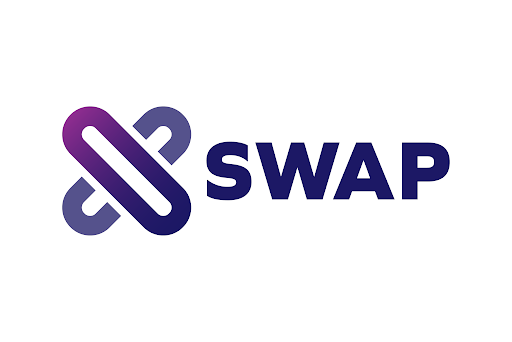
After periods of dissatisfaction, experimentation follows. Sometimes that experimentation disrupts the status quo, as we have seen in the case of Bitcoin, which was released amid the 2008 Global Financial Crisis, and whose source code makes references to government bailouts. “Chancellor on brink of second bailouts,” a Financial Times headline from Jan 3, 2009, was referenced by Satoshi.
Since its inception, the Bitcoin industry demonstrated much dissatisfaction with traditional finance, and this group of smarter revolutionaries developed an ecosystem of solutions—to this day, these innovators remain stalwart in their vision.
Over time, the experiments get smarter. That’s certainly been true of blockchain technology. Shortly after the release of Bitcoin, developers began pondering the ways in which blockchain could be leveraged to achieve more than just being electronic peer-to-peer cash or digital gold. Ethereum is one of the best examples of this evolution. The contract introduced the concept of smart contracts, which are programs stored in a blockchain that run when certain conditions are met. These have expanded what’s possible with blockchain, and seemingly every day the horizon of the crypto universe expands.
It wasn’t only distrust of fiat currency and central banking that led to Bitcoin, but the whole financial system. Ethereum allowed blockchain technology use cases to expand from cash and gold to financial products and services. There is little doubt that we’ve seen blockchain eating the financial world over the last ten years in part due to that distrust, and that trend is sure to continue into the future.
The last ten years have seen how the cryptocurrency space has yielded further decentralizing innovation, such as tokenization and dapps. A new financial system, built upon decentralized models of trust assurance, is being built before our eyes. Bitcoin was just the first example of how a blockchain-based digital asset could be used. The range of intended functions has moved beyond payments and digital gold.
Although imperfect, the burgeoning DeFi movement has cropped up on the margins of the global financial marketplace and has captured the imaginations of millions of people around the world along the way. From trading and speculation to savings and insurance, the DeFi industry is creating an alternative financial system that one day may be robust enough to handle a hot swap from the traditional financial industry.
DeFi remains incipient. Its staunchest proponents envisage a day when it moves beyond speculation and cryptocurrency and begins to eat the financial world. Users of Defi can create leverage trades when purchasing digital assets or take advantage of several incentive mechanisms, and the list of offerings made by decentralized exchanges is only set to expand into the future as the innovation continues.
Decentralized exchanges do not require a trusted intermediary for trades, resulting in cheaper transaction fees arising from lower overheads. As trading takes the retail public by storm, sensitivity to fees will likely continue to be a trend when it comes to traders choosing a platform. As in many market instances, consumers want the best deal, making DEXs an attractive route.
As one might expect from a blockchain niche, DeFi is constantly evolving. Developers are building new services, business models, and introducing new combinations of DeFi possibilities every day. The technologies are getting better and better, becoming more efficient, and user-friendly. Indeed, there remain unresolved economic, technical, and operational issues, but with each generation of blockchain, it seems the challenges have been addressed.
For instance, third-generation ABEYCHAIN 2.0 has introduced novel improvements to blockchain technology. Instead of relying on one consensus mechanism, for instance, this forward-looking protocol combined two different yet complementary consensus mechanisms: Bitcoin’s Proof of Work (PoW) and Dan Larimer’s Delegated Proof of Stake (DPoS), which has been deployed on blockchains such as BitShares, Steemit, and EOS. PoW and DPoS form a new type of consensus mechanism—a hybrid consensus mechanism— that offers the security of Bitcoin, as well as unmatched scalability.
XSWAP, the decentralized exchange on ABEYCHAIN, stands as an improvement over the decentralized exchange of other blockchains, offering both security and scalability made possibly only by its novel hybrid consensus mechanism.
Decentralized finance is a novel niche for blockchain and digital assets, and very much like its predecessor technologies based on blockchain, has metastasized out of a deep distrust of the financial status quo. Obviously, DeFi protocols disintermediate finance. Since 2020, the market has exploded and has been perhaps the most-watched crypto-based boom since the Initial Coin Offering craze of 2017-2018. To be sure, many of the projects theorized about during the ICO boom have resurfaced under the DeFi banner. According to tracking service, DeFi Pulse estimates the present value of digital assets locked in DeFi services at more than $80 billion. By all signs, that number will only continue to go up.
- 2020
- ADvantage
- All
- around
- asset
- Assets
- Banking
- BEST
- Billion
- Bitcoin
- Bitcoin Industry
- blockchain
- blockchain technology
- boom
- Building
- business
- cases
- Cash
- code
- Coin
- Consensus
- Consumers
- continue
- continues
- contract
- contracts
- Creating
- crisis
- crypto
- cryptocurrency
- Currency
- DApps
- day
- deal
- decentralized
- Decentralized Exchange
- DeFi
- DeFi Pulse
- developers
- digital
- Digital Asset
- Digital Assets
- digital gold
- eat
- Economic
- ecosystem
- EOS
- estimates
- ethereum
- evolution
- exchange
- Exchanges
- Expand
- expands
- Fees
- Fiat
- Fiat currency
- finance
- financial
- financial crisis
- Financial Times
- First
- form
- future
- Global
- Gold
- Government
- Group
- How
- HTTPS
- Hybrid
- ICO
- industry
- Initial Coin Offering
- Innovation
- innovators
- insurance
- issues
- IT
- Led
- Leverage
- List
- Making
- Market
- marketplace
- moves
- offering
- Offerings
- Offers
- Other
- payments
- People
- platform
- PoW
- present
- Products
- Programs
- projects
- proof
- public
- range
- retail
- Route
- Run
- Satoshi
- Scalability
- security
- Services
- set
- Signs
- smart
- Smart Contracts
- Space
- stake
- Status
- Steemit
- Storm
- system
- Technical
- Technologies
- Technology
- The Future
- The Projects
- time
- Tokenization
- Tracking
- Traders
- trades
- Trading
- traditional finance
- transaction
- Transaction Fees
- Trust
- users
- value
- vision
- Work
- world
- years












